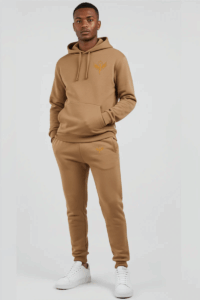Fashion, at its most powerful, is about more than aesthetics—it’s a language, a rebellion, a statement. Among the most expressive and boundary-pushing labels in contemporary fashion, Charles Jeffrey LOVERBOY has carved out a unique space. At the forefront of this brand’s identity is a deceptively simple yet powerfully subversive accessory: the Loverboy hat.
More than just headwear, the Loverboy hat has become a cultural symbol—a manifestation of queerness, gender fluidity, youth rebellion, and avant-garde fashion. As the LOVERBOY label continues to shape fashion narratives around the globe, the hat remains its most recognizable and expressive artifact. In this article, we’ll trace the evolution of the Loverboy hat, dissect its artistic and cultural significance, and explore why it has become a staple in the wardrobes of fashion enthusiasts and artists alike.
Origins of the Loverboy Hat
Founded in 2015 by Scottish designer Charles Jeffrey, LOVERBOY began as a club night in London, a space where art, queerness, and fashion collided in electric bursts of creativity. Jeffrey’s designs were soon picked up by the British fashion elite, but it was the brand’s whimsical, horned headpieces—crocheted hats that extend into devilish points—that began to catch the eye of the global fashion community.
These hats, playful yet provocative, were initially handmade and steeped in DIY ethos. Their punk roots and queer references were immediate. Drawing inspiration from both traditional Scottish attire and the club culture of East London, the Loverboy hat bridged the gap between heritage and radical expression.
A Symbol of Queer Expression
In the fashion world, symbolism is everything. The Loverboy hat, with its exaggerated shape and bold color palette, quickly became more than a fashion accessory—it became a queer symbol.
The horns, for instance, can be read as both defiant and mythical. They evoke images of satyrs, fauns, and other otherworldly beings that lie outside of normative constructs. In queer culture, these references are powerful—they represent fluidity, multiplicity, and resistance to binaries.
Jeffrey, who is openly queer, infuses his work with themes of identity, queerness, and self-expression. The hat functions as a kind of armor, allowing wearers to signal their otherness while celebrating it. In an industry that often commodifies queerness without representation, Loverboy’s ethos is rooted in lived experience.
The Intersection of Fashion and Art
What sets the Loverboy hat apart from other trend accessories is its clear connection to the art world. It’s sculptural. It’s performative. It’s wearable art.
Each hat is often hand-knitted or designed with tactile, experimental textiles, which adds to its bespoke appeal. No two hats feel exactly the same—reflecting individuality and resisting mass production aesthetics. The influence of performance art and drag is evident in the exaggerated silhouettes. Jeffrey has never been shy about drawing inspiration from Leigh Bowery, Vivienne Westwood, or Alexander McQueen—artists and designers who blurred the lines between body, costume, and identity.
On the runway, the hat functions as a kind of punctuation mark—an exclamation point at the end of Jeffrey’s riotous sentence of fashion. When models walk in LOVERBOY hats, they aren’t just showing clothing; they’re embodying a character, a moment, a feeling.
Pop Culture and the Rise of the Hat
In the age of social media, fashion statements go viral quickly. The Loverboy hat became instantly recognizable—a standout on Instagram feeds, in editorials, and across fashion week street style photos. Celebrities like Harry Styles, Ezra Miller, and Troye Sivan have worn variations of the hat, further amplifying its cult status.
But its influence isn’t just top-down. Young creatives on platforms like TikTok and Instagram have adopted the Loverboy aesthetic as their own—mashing it up with Y2K nostalgia, club kid fashion, and vintage thrift looks. The hat’s playful vibe fits perfectly within Gen Z’s irreverent, ironic, and expressive style codes.
It’s no longer rare to see Loverboy hats at underground raves, art school campuses, and protests. It’s a visual shorthand for those in the know—an aesthetic code that signals creativity, queerness, and resistance.
The Politics of Play
Fashion often flirts with rebellion, but the Loverboy hat commits to it. Through its theatricality, it resists the corporate, clean minimalism that often dominates mainstream fashion. Instead, it embraces excess, weirdness, and childlike wonder—all while maintaining a razor-sharp critique of gender norms and fashion hierarchy.
There’s also a broader political commentary in the Loverboy hat. It mocks the seriousness of traditional menswear and questions the confines of traditional femininity. It’s a hat that dares you to be different—and rewards you for it.
In a world of fast fashion and trend cycles, where so many accessories are stripped of meaning, the Loverboy hat reclaims the narrative. It tells a story. It challenges assumptions. And it invites others to join in the play.
Design Evolution and Collaborations
Though it began as a singular silhouette, the Loverboy hat has since evolved into various iterations. Crochet remains a favorite medium, but materials like faux fur, tartan wool, metallic knits, and even upcycled fabrics have entered the mix.
Collaborations with brands like Mulberry and major fashion houses have also given the hat new interpretations. Yet, no matter how much it evolves, the essential DNA remains intact: bold, handcrafted, joyful rebellion.
Charles Jeffrey’s commitment to sustainable practices has also influenced recent designs. Many hats are now made from deadstock or recycled yarns, aligning the accessory with the growing eco-consciousness of the fashion world.
Critique and Conversation
Of course, with popularity comes critique. Some argue that the hat’s rising price point and elite fashion status have distanced it from the grassroots communities it originally celebrated. As with any fashion object that begins in subculture and ascends to high fashion, there’s tension between authenticity and commodification.
However, Jeffrey seems aware of these critiques. In interviews, he continues to emphasize accessibility, community, and inclusion. The Loverboy club nights remain free spaces for queer creatives, and the label has collaborated with emerging artists to retain that sense of grassroots energy.
The Future of the Loverboy Hat
What does the future hold for the Loverboy hat? As fashion continues to explore inclusivity, queerness, and experimental design, the hat’s place seems secure. It’s already more than a trend—it’s an icon.
New generations of designers are taking cues from Jeffrey’s willingness to blur boundaries. The Loverboy hat stands as proof that accessories can be radical, political, and fun all at once. It has rewritten what a “statement piece” can be: not just an eye-catching item, but a wearable declaration of values.
As LOVERBOY expands into new markets and continues to evolve, the hat remains its spiritual core—a beacon of individuality in an increasingly homogenized industry.






